Need to move photos from your Mac to your iPhone after you finish editing? No problem. You can use Apple’s AirDrop feature, iCloud Photo Library, and Finder to quickly transfer photos from your Mac to your iPhone.
I’m Jon, an Apple expert, and owner of an iPhone and Macbook Pro. I regularly transfer photos from my Mac to my iPhone and made this guide to help you.
AirDrop and iCloud are the easiest methods, but Apple-related services aren’t your only options, so continue reading for a guide covering 4 different ways to transfer photos from one device to another!
Table of Contents
Method 1: Use iCloud Photo Library
While you can move photos from one device to another as you see fit, it might be easier to set up syncing between your personal devices to save time. The best way to do this is using your iCloud Photo Library (you’ll need a Mac running macOS Yosemite or later).
First, you’ll need to enable iCloud Photo Library on your Mac by following these steps:
- Open the Photos app on your Mac.
- In the Photos app, select “Photos” from the top left of the menu bar.
- Select “Preferences” or click Command + on your keyboard.
- Open the “iCloud” tab, then ensure the “iCloud Photos” option is checked.
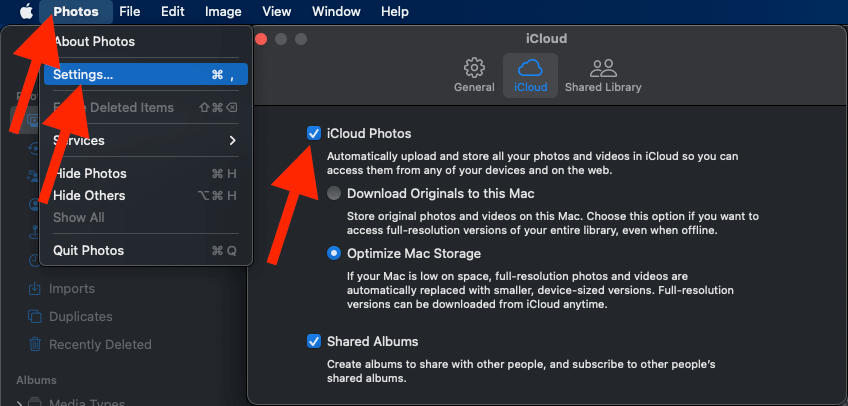
If you’re using macOS Catalina or later, you might need to add a few extra steps to the process. You must ensure the “System Photo Library” is on before enabling iCloud Photos.
- Open the Photos App, then select “Preferences.”
- Click “General” in the top left corner of the window.
- Click “Use as System Photo Library.” This step might take a few minutes to complete.
Once you enable iCloud Photos, you’ll need to enable it on your iPhone by following these steps:
Step 1: Unlock your iPhone and open the Settings app. Click on your name and select iCloud.
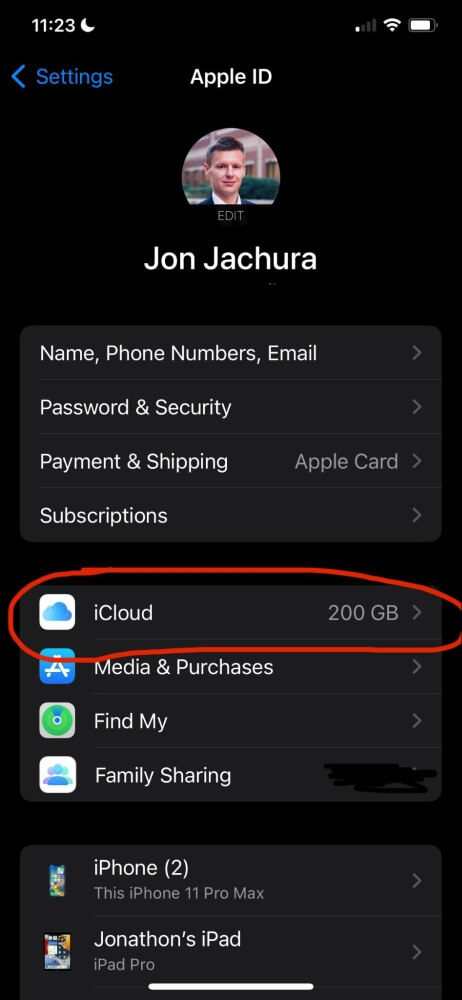
Step 2: In the “Photos” settings, ensure the toggle control next to “iCloud Photos” is on (it will be green).
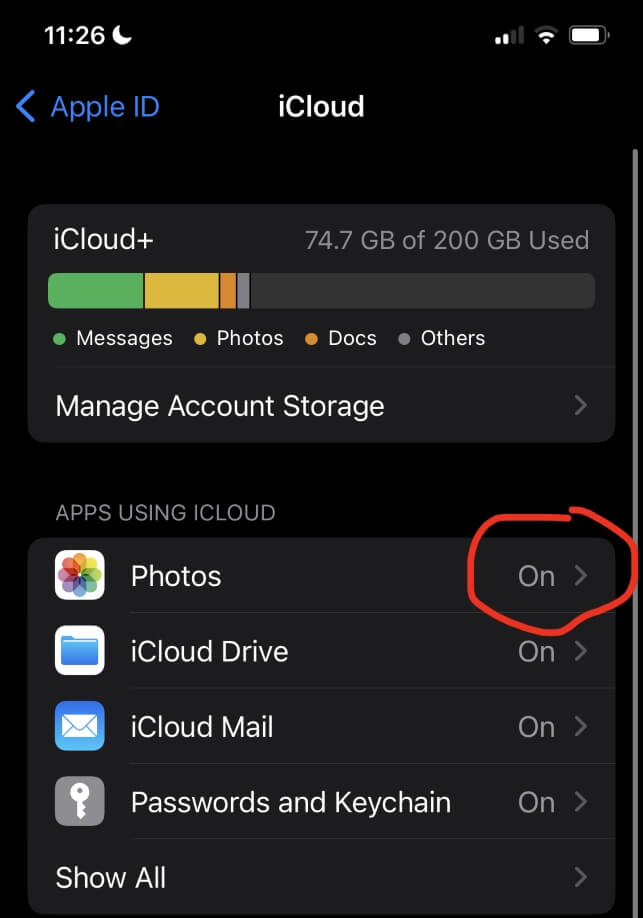
Step 3: After you enable iCloud Photos on both devices, it can take up to 24 hours for the content on all your devices to sync to your iCloud account. Ensure both devices are connected to WiFi, as they can’t sync without an Internet connection.
Method 2: Use AirDrop
AirDrop is one of the easiest ways to move photos from one Apple device to another. Apple introduced this feature years ago in the macOS X Lion update, so your Mac is likely compatible with it, even if the device is a bit older.
Here’s how to use AirDrop to move photos from your Mac to your iPhone:
Step 1: Open the Photos app on your Mac.
Step 2: Find and select the photos and videos you want to transfer to your iPhone. Hold Command and click each photo to select multiple.
Step 3: Click the share symbol at the top of the window (a square with an arrow pointing up).
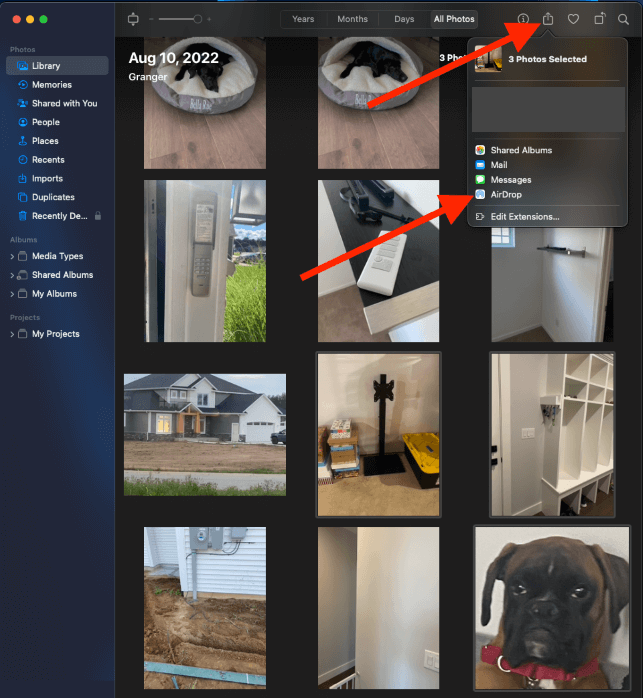
Step 4: Select “AirDrop” and choose your iPhone from the list.
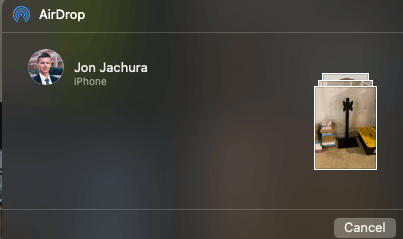
You might receive a notification on your iPhone. If it prompts you, tap “Accept” to allow the transfer of these photos and videos.
Note: Although this option is fast and convenient for sharing files between Apple devices, it isn’t ideal for transferring large batches (like your entire photo library).
Method 3: Use Finder
You can quickly transfer and export photos from your Mac to your iPhone using Finder. If your Mac uses macOS Mojave or earlier, you’ll follow this process using iTunes, but if you’re using macOS Catalina or later, you’ll follow this process using Finder.
This method requires a USB cable, so you’ll need one compatible with both devices.
Follow these steps:
Step 1: Plug in your iPhone to your Mac with a USB cable. Launch it manually if Finder doesn’t pop up when you connect the two devices (or iTunes for macOS Mojave or earlier).
You may need to click “Trust” on your iPhone if you get the below prompt when you plug it into your Mac.

Step 2: In the device list on the left sidebar, find your iPhone device icon. Click on it to open it.
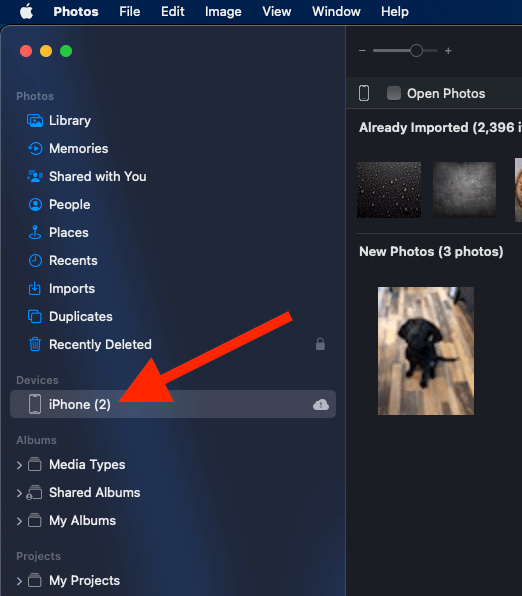
Step 3: Once your phone pops up, open the “Photos” tab. Check the box next to “Sync photos to your device from.”
Step 4: In the drop-down menu next to this option, select the source you want to sync from (Pictures, etc.).
Step 5: Beneath the “Sync Photos” checkbox, check the box next to the option you want: “Sync All Folders” or “Sync Selected Photos.”
Step 6: Check the box next to “Include videos” if you want to include videos in the syncing process. Once you change the selections to your liking, click “Sync” in the bottom right corner of the screen to begin syncing.
Method 4: Use A Data Transfer Tool
Alternatively, you can also use a third-party data transfer tool to move photos and videos from one device to another. For example, you could use Dropbox, Google Drive, Amazon Drive, Microsoft OneDrive, or similar tools.
If you already have an account with one of these options, you can easily upload and access data by signing into your account on both devices (as long as your photos are uploaded to the service).
However, I recommend just using iCloud. Since it is native to iPhone and Mac, iCloud gives you the best, seamless, and automatic photo syncing between devices.
FAQs
Here are some common questions on transferring photos from Macs to iPhones.
Can I Transfer Photos from My Mac to my iPhone without Syncing?
If you don’t want to sync your Apple devices, you can always transfer photos only using AirDrop or a third-party data transfer service. If you don’t want all the photos to sync, just don’t enable iCloud photos on one or both devices.
Can I Access My iCloud Account in a Web Browser?
You can always access your iCloud Photos account in a web browser if iCloud Photos isn’t working for you. Simply sign in to your account using your Apple ID and password on “icloud.com.”
Once you sign in, click on the Photos icon to view and manage your photos and videos. Of course, this option won’t work if you haven’t already synced your photos to your account, so you’ll need to do that first before accessing these files.
Conclusion
You can quickly transfer photos from your Mac to your iPhone using iCloud, AirDrop, a USB cable, or other file transfer apps. Either way, the process is straightforward, whether you use an Apple service or a third-party data transfer account.
What is your go-to method for transferring photos from your Mac to your iPhone?
